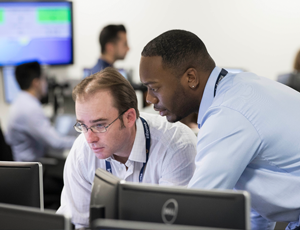Measuring risk to finance cures with MIT
Andrew W. Lo, Laboratory for Financial Engineering at MIT Sloan School of Management, Cambridge
In 2016’s Sustainability Report, Mark Gordon, Head of Pharma Product Management in our Informa Intelligence Division, told us about his team’s collaboration with Professor Andrew W. Lo of the Massachusetts Institute of Technology (“MIT”). The aim was to leverage Informa’s data and MIT’s specialist expertise to help find transformational ways of financing the development of new medicines. We invited Professor Lo to update us on progress: “When I first met Mark Gordon I was a new comer to healthcare – my background as an economist was in designing mathematical models for investment strategies and risk an analysis. But several family members had been recently diagnosed with cancer and, as I learned about how cancer drugs were developed and funded, I was shocked that the existing system didn’t make more use of recent developments in financial risk management. Many promising drug candidates were sitting on shelves gathering dust because they lacked the funding to finish trials. Here was something an economist could help with, something that could make a real difference to a lot of people.
Calculated risk
Risk is often one of the main reasons new drugs don’t get developed. It can cost over $2bn and take up to 10 years to get a new drug approved. Only a fraction of potential new therapies succeed, and only those that get funded all the way – about 5% in oncology over the past 20 years. Because the risk is so high, investors just aren’t able to fund some projects that could yield life-saving therapies. My hunch was, if we could provide more accurate measures of the risk involved, we might be able to give investors more confidence in this sector. Using Informa’s data sets of over 150,000 clinical trials across more than 15,000 compounds, that’s just what we’ve done.

Looking back to see ahead
Our collaboration with Informa started as Project ALPHA (Analytics for Life-sciences Professionals and Healthcare Advocates), which uses a new approach to estimate probabilities of success using vast amounts of clinical trial data. This had never been done on such a large scale before, and we believe that the size of the data set we’re using yields some of the most accurate estimates available. What’s more amazing is Informa’s commitment to allowing us to make the results publicly available at no cost. At project alpha.mit.edu we’re providing quarterly updates to these estimates, and it seems like the industry has started using these numbers. It’s a bold and savvy business move by Informa, which can anticipate a growing number of investors wanting to subscribe for more detailed analytics. Using the same data set, we’re currently applying machine learning techniques to construct more refined models for predicting the out comes of clinical trials. We’ll be publishing an article on this work in 2019, along with open-source software that will allow all stakeholders in the biomedical ecosystem to apply these tools to their own projects.
It comes down to patients
Our research programme is aimed at improving estimates of the commercial viability of drug and device development projects. Our work will, ultimately, allow investors to better spread their risks across a larger number of investments and attract new funders. The bottom line for us is more positive outcomes for patients. Everyone on our team knows someone dealing with cancer, Alzheimer’s, or other life-threatening diseases that might be saved by a new drug that’s currently under development. This is what motivates us.
